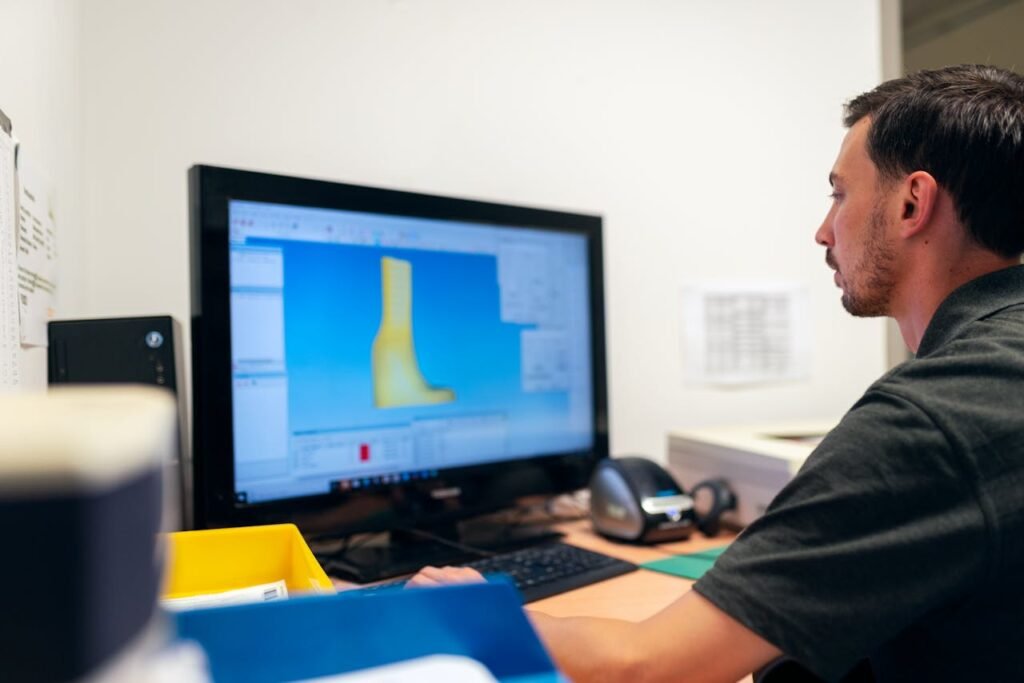The world of prosthetic limbs is undergoing a transformation like never before. Advances in materials science are not only improving the functionality and comfort of prosthetics but also making them more accessible and personalized. From the soft and flexible properties of silicone to the cutting-edge integration of artificial intelligence (AI), each new development is bringing us closer to prosthetics that feel like a natural extension of the human body.
In this article, we’ll explore the incredible materials shaping the future of prosthetic limbs. From how these materials work to the impact they have on users’ lives, we’ll uncover the science and strategy behind creating prosthetics that are more durable, responsive, and human-like than ever before.
The Role of Materials in Prosthetic Evolution
Materials play a crucial role in prosthetic innovation. They determine not only the device’s appearance but also its functionality, comfort, and durability.
Over the decades, the materials used in prosthetic limbs have evolved dramatically. Early wooden designs gave way to metals, then plastics, and now, a new wave of advanced materials is driving progress.
Understanding User-Centric Material Design
One of the most important aspects of material selection is how it directly impacts the user experience.
Materials dictate the weight, durability, and appearance of a prosthetic limb, all of which influence a user’s comfort and acceptance of the device.
For businesses, this means prioritizing materials that balance these factors without compromise.
Leveraging Material Properties for Differentiation
In an industry where trust and performance are paramount, businesses can differentiate themselves by offering prosthetics made from cutting-edge materials that address specific challenges faced by users.
For example, introducing materials that are lightweight yet sturdy, such as titanium alloys or advanced polymers, can open doors to target specific user groups like athletes or elderly individuals who prioritize ease of use.

Sustainability: A Growing Priority in Material Innovation
As awareness around environmental sustainability grows, businesses have an opportunity to lead by adopting eco-friendly materials. Incorporating biodegradable or recyclable materials into prosthetic designs can resonate with environmentally conscious customers and set the brand apart.
Partner with material suppliers focusing on sustainable manufacturing. Invest in research to create eco-friendly alternatives to traditional plastics or composites. Develop take-back programs where old prosthetic parts are recycled or repurposed.
Not only does this strategy align with global sustainability goals, but it also provides a compelling narrative for marketing and customer engagement.
Collaborating with Material Scientists and Engineers
Material innovation doesn’t happen in isolation. Businesses in the prosthetics space should actively collaborate with researchers and material scientists to stay ahead of emerging trends.
Partnerships with academic institutions or industry-leading labs can provide insights into new materials, such as biohybrids or nanomaterials, long before they reach mainstream application.
Such collaborations can also lead to proprietary material technologies, giving businesses a competitive edge. For example, developing a unique composite that combines the strength of carbon fiber with the adaptability of thermoplastics can become a signature feature of a company’s prosthetics line.
Silicone: A Game-Changer for Comfort and Realism
Silicone emerged as a revolutionary material in prosthetic manufacturing due to its incredible versatility. Soft, flexible, and skin-like, silicone is often used in external prosthetic coverings to create a lifelike appearance.
Its texture closely resembles human skin, making prosthetic limbs more natural-looking and less conspicuous.
The Science Behind Silicone’s Success
Silicone’s appeal lies in its remarkable combination of flexibility, resilience, and biocompatibility. As a polymer, silicone can be engineered to mimic the texture and elasticity of human skin.
This makes it an excellent choice for creating prosthetic coverings that look and feel natural.
Additionally, its hypoallergenic properties ensure that it is safe for users with sensitive skin, making it a universal material for prosthetic applications.
Strategic Business Applications of Silicone
For businesses in the prosthetics industry, silicone offers opportunities to innovate and differentiate their offerings. By leveraging its unique properties, companies can address key user pain points and deliver products that stand out in the market.
Customizing for Aesthetic Appeal
Silicone can be tinted and textured to match an individual’s skin tone, freckles, or even veins, creating prosthetics that are virtually indistinguishable from natural limbs.
For businesses, investing in advanced color-matching technology and skilled artisans to craft hyper-realistic silicone coverings can provide a premium product line that appeals to users prioritizing aesthetics.

Enhancing Comfort Through Silicone Liners
Silicone liners act as a cushion between the prosthetic socket and the user’s residual limb, reducing pressure points and improving overall comfort.
Businesses can innovate by developing silicone liners with advanced features such as antibacterial coatings or integrated cooling technology to address common user concerns like hygiene and overheating.
Exploring Functional Coatings
Beyond aesthetics, silicone can be treated with functional coatings to enhance its durability and usability.
For instance, coatings that increase tear resistance or make silicone easier to clean can significantly improve the user experience.
Businesses that offer such enhancements can position themselves as providers of low-maintenance, long-lasting prosthetics.
Overcoming Challenges in Silicone Application
While silicone offers numerous benefits, its application in prosthetics is not without challenges. For businesses, addressing these challenges strategically can lead to more efficient production processes and superior products.
Balancing Cost and Accessibility
High-quality medical-grade silicone can be expensive, which may increase the cost of the final product.
To mitigate this, businesses can explore bulk purchasing agreements with suppliers or invest in research to develop cost-effective alternatives without compromising quality.
Ensuring Long-Term Performance
Silicone can degrade over time, especially with constant exposure to oils or chemicals.
To ensure longevity, businesses should focus on developing advanced silicone blends or protective coatings that resist wear and environmental damage.
Clear care instructions for users can also help extend the life of silicone components.
Streamlining Production
The customization potential of silicone is both a strength and a challenge. Achieving high levels of realism or complex designs can be labor-intensive.
Investing in automated silicone molding technologies or 3D printing techniques can significantly reduce production times and costs, enabling businesses to scale while maintaining quality.

The Strength of Carbon Fiber in Performance Prosthetics
For individuals requiring high-performance prosthetics, carbon fiber has become the material of choice. Known for its incredible strength-to-weight ratio, carbon fiber offers unmatched durability without adding extra weight. This makes it ideal for athletes or individuals with active lifestyles who need their prosthetics to withstand rigorous use.
Why Carbon Fiber Excels in Performance Prosthetics
Carbon fiber’s popularity in performance prosthetics stems from its ability to deliver on two critical fronts: durability and responsiveness.
The material’s high tensile strength ensures that it can withstand repeated stress without deformation or wear, making it ideal for high-impact activities like running or jumping.
At the same time, its light weight reduces fatigue, allowing users to perform activities for extended periods with less strain.
Additionally, carbon fiber has a unique elasticity that stores and releases energy with each step. This property mimics the function of tendons, providing a spring-like effect that propels users forward.
Strategic Applications for Businesses
While the technical benefits of carbon fiber are well-established, businesses in the prosthetics industry can strategically leverage this material to create innovative and user-focused products. Here’s how:
Targeting Niche Markets with Specialized Designs
Carbon fiber allows for the creation of highly specialized prosthetics tailored to specific user needs. For example, designing prosthetics for athletes—such as running blades or cycling prosthetics—can position your business as a leader in the sports prosthetics market.
Collaborating with athletes during the design phase ensures that the final product meets the rigorous demands of competitive sports.
Integrating Carbon Fiber into Modular Prosthetics
Modular designs, where different components of a prosthetic limb are optimized for specific tasks, can benefit significantly from carbon fiber.
For instance, a prosthetic leg could feature a carbon fiber foot plate for energy return while utilizing a different material for the socket to enhance comfort.
This modularity not only improves functionality but also simplifies repairs and upgrades.
Exploring Aesthetic Customization Options
Carbon fiber’s sleek, modern appearance can be an attractive feature for many users. Businesses can explore ways to customize the finish of carbon fiber prosthetics with colors, patterns, or coatings that reflect a user’s personality or preferences.
This not only enhances user satisfaction but also creates a unique selling point for your brand.
Overcoming Challenges in Carbon Fiber Manufacturing
While carbon fiber offers numerous benefits, its manufacturing process can be costly and complex. For businesses, addressing these challenges strategically is essential to ensure profitability without compromising quality.
Streamlining Production Processes
Investing in automated manufacturing technologies, such as advanced resin transfer molding, can help reduce production costs and increase scalability.
Partnering with experienced carbon fiber suppliers can also streamline sourcing and ensure consistency in material quality.
Balancing Cost and Performance
Not every prosthetic user requires the high-performance properties of carbon fiber.
Businesses should strategically allocate this material to premium or performance-focused product lines while offering alternative options, such as reinforced thermoplastics, for budget-conscious users.
This tiered approach allows you to serve a broader customer base.

Educating Clinicians and Users
Carbon fiber’s benefits are best realized when paired with proper fitting and training. Businesses should invest in educational programs for clinicians to ensure that users receive devices optimized for their needs.
Providing users with clear guidance on the capabilities and maintenance of carbon fiber prosthetics can further enhance their experience and longevity of the product.
Plastics: Lightweight Versatility at Its Best
Plastics have long been a go-to material for prosthetic limbs due to their lightweight nature and affordability. Advances in polymer technology have expanded the possibilities of what plastics can achieve.
Modern prosthetic sockets, for instance, are often made of thermoplastics that can be molded to perfectly fit an individual’s residual limb.
The Evolving Role of Plastics in Prosthetics
Plastics were initially embraced in prosthetics for their affordability and ease of manufacturing, but their role has grown significantly with advancements in material science.
Modern polymers can be engineered to exhibit specific properties such as flexibility, rigidity, or resistance to environmental factors.
This has made plastics indispensable in the creation of prosthetic sockets, joints, and even aesthetic coverings.
Strategic Business Applications of Plastics
For businesses, leveraging the properties of modern plastics effectively can lead to innovative product designs that meet diverse user needs. Here’s how companies can strategically use plastics to stay competitive:
Optimizing the Socket Fit with Thermoplastics
A poorly fitting socket is one of the most common issues faced by prosthetic users. Businesses can address this by investing in thermoplastics that allow for on-site adjustments.
Prosthetists can heat and reshape these plastics during fitting sessions, ensuring a perfect fit without requiring a complete redesign.
This not only enhances user satisfaction but also reduces the time and cost associated with refitting.
Developing Lightweight Prosthetic Solutions
Plastics excel in reducing the overall weight of prosthetic limbs, a critical factor for user comfort and mobility. Businesses can explore the use of advanced lightweight polymers to design prosthetics that are easier to wear for extended periods.
Highlighting the weight reduction in marketing materials can appeal to users who prioritize comfort and ease of use.
Incorporating Transparent and Flexible Plastics
Transparent plastics, such as polycarbonate, can be used in unique prosthetic designs that showcase internal mechanisms or incorporate aesthetic features.
Flexible plastics, on the other hand, are ideal for creating dynamic components like joint covers or liners that need to accommodate movement.
Overcoming Challenges in Plastic Applications
While plastics offer numerous benefits, businesses must address certain challenges to maximize their potential in prosthetic design.
Addressing Environmental Concerns
The use of non-biodegradable plastics has raised environmental concerns. Businesses can take a proactive approach by incorporating biodegradable or recyclable plastics into their product lines.
For example, polylactic acid (PLA) plastics derived from renewable resources can be a sustainable alternative for non-structural components.
Ensuring Material Durability
Not all plastics are suitable for high-stress applications. For components exposed to heavy loads or repetitive motion, businesses should prioritize high-performance polymers like PEEK or reinforced composites.
Conducting rigorous durability testing ensures that the chosen materials can withstand prolonged use.
Improving Heat Resistance
Some plastics may deform or lose strength at high temperatures, which can be an issue in hot climates.
Businesses can address this by incorporating heat-resistant plastics or developing hybrid materials that combine the best properties of multiple polymers.
The Advent of Smart Materials
Smart materials represent the cutting edge of prosthetic development. These materials have properties that respond to external stimuli like temperature, pressure, or electrical signals.
Shape-memory alloys, for example, can return to their original shape after being deformed, providing enhanced durability and resilience.
What Makes Smart Materials Revolutionary?
Smart materials are defined by their ability to change properties in response to external stimuli such as temperature, pressure, or electrical input.
This adaptability opens up new possibilities in prosthetics, from self-adjusting sockets to artificial muscles that mimic natural movement.
Strategic Business Applications of Smart Materials
For businesses, incorporating smart materials into prosthetic design is not just an upgrade; it’s a chance to redefine product capabilities and user expectations. Here are key areas where smart materials can be leveraged strategically:

Creating Self-Adjusting Sockets
Traditional prosthetic sockets can cause discomfort due to changes in residual limb size caused by swelling or weight fluctuations.
Smart materials like shape-memory polymers can be used to create self-adjusting sockets that adapt to these changes in real-time.
This eliminates the need for frequent adjustments and enhances user comfort.
Developing Bio-Inspired Movements
Electroactive polymers (EAPs) mimic the behavior of human muscles, making them ideal for robotic or bionic prosthetic limbs.
Businesses can use EAPs to design prosthetics capable of precise, natural movements, such as gripping delicate objects or walking smoothly on uneven terrain.
Enhancing Durability with Self-Healing Polymers
Minor cracks or wear in prosthetics can lead to costly repairs or replacements. Self-healing materials address this issue by repairing themselves when exposed to certain stimuli, such as heat or UV light.
Incorporating these materials can extend the lifespan of prosthetic devices and reduce maintenance costs for users.
Enabling Energy Efficiency
Piezoelectric materials can convert mechanical stress, like the impact of walking, into electrical energy.
This energy can be used to power sensors, actuators, or other electronic components in smart prosthetics, reducing reliance on external batteries and enhancing sustainability.
Artificial Intelligence: Breathing Life into Prosthetics
Artificial intelligence (AI) is revolutionizing the way prosthetic limbs function. By integrating AI into prosthetic systems, developers can create devices that learn and adapt to the user’s movements.
This technology relies on advanced sensors and machine learning algorithms to predict the user’s intentions and assist in executing them seamlessly.
How AI is Transforming Prosthetics
AI operates as the brain behind modern prosthetic systems, utilizing machine learning algorithms and advanced sensors to process vast amounts of data. Here’s how AI is redefining prosthetics:
Real-Time Adaptation
AI-powered prosthetics use data from sensors to understand a user’s movement patterns and adjust accordingly.
For instance, a prosthetic leg equipped with AI can automatically adjust its gait mechanics based on the terrain, whether it’s a flat surface, stairs, or an incline. This adaptability minimizes user effort and enhances safety.
Predictive Movement Technology
By analyzing signals from a user’s residual muscles, AI can predict their intended actions. A bionic hand, for example, can anticipate whether the user wants to grip a cup or shake hands, enabling quicker and more precise movements.
Enhanced Sensory Feedback
AI integrates with haptic sensors to provide real-time feedback to users. This allows users to “feel” the pressure of their grip or the texture of objects, making the prosthetic limb function more like a natural extension of the body.
Continuous Learning
AI-powered prosthetics improve over time by learning from user behavior. Machine learning algorithms analyze repetitive patterns and optimize device responses, making the prosthetic increasingly intuitive with use.

Strategic Business Applications of AI in Prosthetics
For businesses, integrating AI into prosthetic design is more than a technological upgrade—it’s a strategic move to create cutting-edge solutions that resonate with users and position the brand as an innovator in the field.
- Developing Personalized Solutions
AI enables the creation of highly personalized prosthetics. By using data from initial fittings and ongoing use, businesses can tailor devices to individual user needs.- Offering a service model where AI-powered prosthetics are continually updated based on user feedback and data can build customer loyalty.
- Focusing on Niche Markets
AI can drive specialized prosthetics for specific user groups, such as athletes or individuals with unique mobility challenges.- For example, AI-powered prosthetics designed for runners could analyze stride patterns and adjust for maximum energy efficiency. Targeting these niche markets can differentiate your offerings and cater to underserved segments.
- Introducing Smart Rehabilitation Systems
AI doesn’t stop at the prosthetic device—it can also enhance rehabilitation. Businesses can develop AI-driven rehabilitation tools that sync with prosthetic devices to monitor progress, suggest exercises, and provide real-time coaching.- This integrated approach adds value and ensures users achieve optimal functionality with their prosthetics.
Conclusion
From the soft touch of silicone to the intelligent adaptability of AI, the evolution of materials in prosthetic design is transforming what’s possible for individuals with limb loss.
These advancements are not just about improving function; they’re about creating prosthetics that integrate seamlessly into users’ lives—offering comfort, durability, and personalization like never before.
For businesses, this revolution in materials science offers an unprecedented opportunity to innovate, lead, and impact lives positively.
By leveraging cutting-edge materials such as carbon fiber, titanium, hybrid composites, and biodegradable alternatives, companies can develop prosthetics that cater to diverse needs.
Adding features like AI integration and smart textiles further elevates user experience, setting new benchmarks in the industry.



